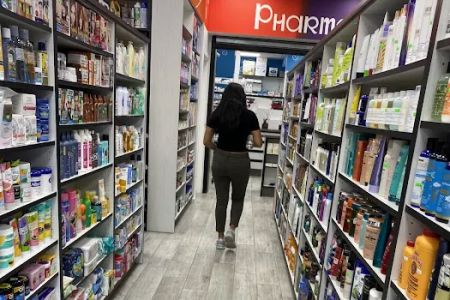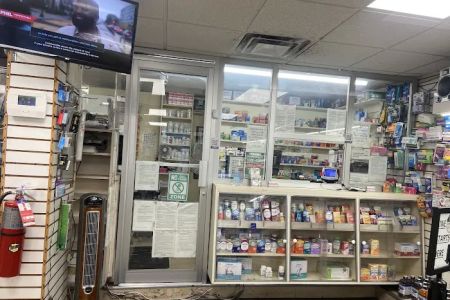1. Introduction to Pharmacy Technology in Medication Management
Over the years, I’ve had the privilege of working with various healthcare systems, and one aspect that consistently stands out is the role of pharmacy technology in medication management. As someone who is deeply interested in how technology can enhance patient care, I’ve witnessed firsthand how innovations in pharmacy technology are revolutionizing the way medications are managed, dispensed, and monitored.
Medication management is an essential part of the healthcare process. It ensures that patients are prescribed the correct medications, understand how to take them, and experience positive health outcomes. However, with the increasing complexity of medications, polypharmacy (the use of multiple medications by a patient), and the potential for errors, there is a significant need for advanced technological solutions to help manage these challenges. In this article, I’ll explore how pharmacy technology is being used to improve medication management, highlight some key tools, and discuss the benefits and challenges that come with integrating these technologies into pharmacy practices.
2. The Role of Pharmacy Technology in Modern Healthcare
Pharmacy technology encompasses a range of digital tools, systems, and software that assist in the management of medications. From electronic health records (EHR) and pharmacy management systems to medication dispensing robots and medication therapy management (MTM) software, pharmacy technology is transforming the landscape of medication management. In my experience, one of the most impactful uses of pharmacy technology is improving the accuracy and efficiency of medication dispensing, which directly contributes to patient safety and better health outcomes.
2.1 Automated Medication Dispensing
One of the first pieces of technology I encountered in the pharmacy that left a lasting impression was automated medication dispensing systems. These systems are designed to reduce human error by automating the process of dispensing medications to patients. I was amazed at how these machines could accurately fill prescriptions, label medications, and even track inventory—all while providing a secure and efficient workflow. By integrating these automated systems, pharmacies are able to minimize the risks of medication errors, ensuring that patients receive the correct doses and medications without confusion.
2.2 Medication Management Software
Another crucial component of pharmacy technology is medication management software. This software integrates with electronic health records to provide real-time information on a patient’s medications. In my experience, these systems help pharmacists monitor medication usage, identify potential drug interactions, and ensure that prescriptions are being followed correctly. The software also makes it easier for healthcare providers to adjust prescriptions, track refills, and send reminders to patients to take their medications as prescribed. As someone who has worked with this technology, I can attest to how much easier it makes the process of managing complex medication regimens, especially for patients with chronic conditions.
3. Medication Therapy Management (MTM) and Technology
Medication Therapy Management (MTM) is another area where technology plays a key role. MTM is a service that helps ensure that medications are used appropriately and effectively. Through MTM services, pharmacists are able to review a patient’s medications in detail, assess for potential side effects, and collaborate with other healthcare professionals to optimize the patient’s treatment plan. What stood out to me was how MTM software allows pharmacists to easily track and assess a patient’s medication history, identify discrepancies, and offer solutions that improve health outcomes.
3.1 Enhanced Communication Through Technology
One of the challenges I encountered in my career was ensuring clear communication between pharmacists, doctors, and patients. Pharmacy technology now allows for better communication through shared digital platforms. With MTM software, I’ve seen pharmacists collaborate seamlessly with doctors, sending updates, alerts, and recommendations for medication adjustments. This type of communication enhances the overall care coordination and ensures that patients receive the best possible treatment.
3.2 Data Analytics for Better Medication Decisions
What really sets MTM technology apart is its ability to analyze patient data to provide actionable insights. The software can track patient adherence to medications, flag potential side effects, and even predict outcomes based on medication history. In my experience, these data-driven insights help pharmacists make more informed decisions about a patient’s care, ensuring that medications are not only effective but also safe for each individual.
4. The Benefits of Pharmacy Technology for Medication Management
As I’ve witnessed in my work, the integration of pharmacy technology into medication management offers numerous benefits that extend beyond just improving accuracy. These benefits include improved patient safety, better adherence to treatment plans, and greater overall efficiency in the healthcare system. Let’s take a closer look at how pharmacy technology enhances medication management in ways that significantly impact patient outcomes.
4.1 Improving Patient Safety
One of the biggest advantages of using pharmacy technology in medication management is the significant reduction in medication errors. In my experience, the automation of medication dispensing and the use of electronic health records greatly reduces the likelihood of errors, such as incorrect prescriptions or dosage mistakes. By eliminating manual entry and cross-referencing prescription information in real-time, pharmacy technology ensures that patients receive the right medications at the right time.
4.2 Enhancing Medication Adherence
Another critical benefit of pharmacy technology is its ability to improve medication adherence. Patients often forget to take their medications or miss doses, leading to suboptimal health outcomes. Technology-driven medication management systems can send reminders to patients via email or text, prompting them to take their medications as prescribed. In my experience, these reminders significantly improve patient adherence, particularly for those managing chronic conditions like diabetes or hypertension, where consistent medication intake is essential for managing the condition.
4.3 Streamlining Workflow for Pharmacists
From the perspective of a pharmacist, one of the most beneficial aspects of pharmacy technology is how it streamlines workflow. With automated medication dispensing systems and medication management software, pharmacists can spend less time on manual tasks and focus more on patient care. These systems allow pharmacists to quickly check for drug interactions, verify dosages, and ensure that patients are receiving the most appropriate medications. This not only improves efficiency but also reduces stress and burnout among pharmacy staff.
5. Challenges and Considerations in Implementing Pharmacy Technology
While pharmacy technology offers numerous benefits, there are also challenges and considerations that healthcare systems must address when implementing these solutions. In my experience, these challenges include the initial costs of technology implementation, training staff to use the new systems, and ensuring that technology is integrated seamlessly into existing workflows.
5.1 Cost and Financial Investment
One of the main hurdles I’ve seen is the financial investment required to implement pharmacy technology. Automated dispensing systems, medication management software, and other advanced tools can be expensive to purchase and maintain. However, in the long run, these technologies often pay for themselves through increased efficiency, reduced medication errors, and improved patient outcomes. It’s important for healthcare systems to weigh the upfront costs against the long-term benefits when deciding whether to invest in these technologies.
5.2 Training and Adoption Challenges
Another challenge I encountered was ensuring that staff members were properly trained to use the new technology. Pharmacy technology can be complex, and without proper training, there’s a risk of errors and underutilization of the systems. I’ve found that providing comprehensive training and ongoing support is essential to ensuring that pharmacy staff can effectively use the technology to improve medication management.
6. Looking Ahead: The Future of Pharmacy Technology
The future of pharmacy technology looks incredibly promising. As artificial intelligence (AI), machine learning, and other advanced technologies continue to evolve, the potential for even more accurate and efficient medication management is enormous. In the near future, we may see systems that can predict medication needs based on a patient’s medical history and genetic data, making medication management even more personalized and precise.
For healthcare providers, adopting pharmacy technology is no longer a luxury but a necessity to stay ahead in an increasingly complex healthcare landscape. As I’ve learned from my own experiences, implementing these tools can help reduce errors, improve patient safety, and lead to better health outcomes. If you’re looking to learn more about pharmacy technology or need expert guidance, visit Pharmacy for top recommendations and professional support to integrate these tools into your practice.














